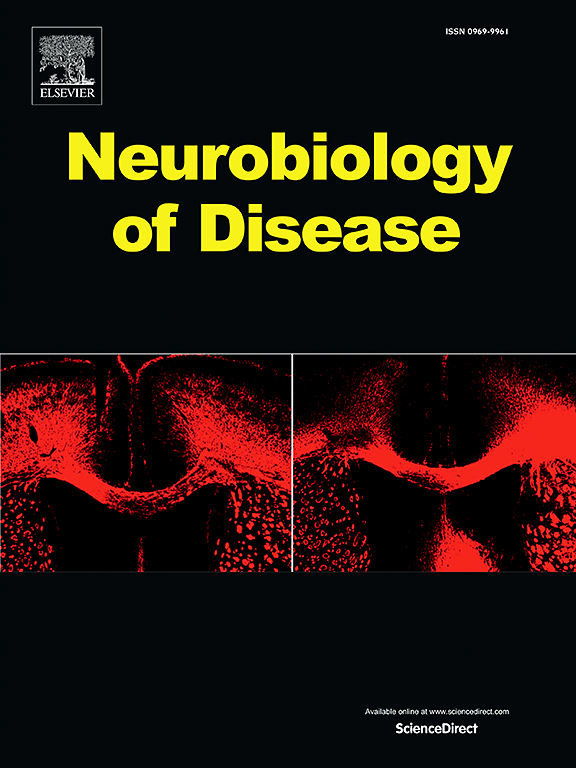Cell-to-cell transmission of IAPP aggregates in T2DM induces neuronal death by triggering oxidative stress and ferroptosis
IF 5.6
2区 医学
Q1 NEUROSCIENCES
引用次数: 0
Abstract
Type 2 diabetes mellitus (T2DM) is associated with an elevated risk of neurodegenerative diseases, yet the underlying mechanisms remain elusive. A hallmark feature of T2DM is the amyloid deposition of islet amyloid polypeptide (IAPP) in the pancreas, which may contribute to both pancreatic dysfunction and systemic pathological processes. In this study, we aimed to explore the role of IAPP aggregates as a possible mechanistic link in diabetes-associated neurodegeneration. Using co-culture systems with fluorescently labeled IAPP fibrils, we observed IAPP aggregates transfer between neurons via tunneling nanotubes (TNTs). RNA-seq analysis demonstrated that exposure to IAPP amyloid fibrils triggered substantial alterations in transcriptional profiles, enriching pathways related to oxidative phosphorylation and reactive oxygen species (ROS) production. Mechanistic investigations further showed that IAPP fibrils led to increased ROS levels, mitochondrial dysfunction, and ultimately neuronal death through ferroptosis. Specially, IAPP fibrils disrupted the p62-Keap1 interaction, blocking NRF2 nuclear translocation and altering the expression of ferroptosis-related proteins. Overall, these findings highlight the role of IAPP aggregates in T2DM associated with neurodegeneration, providing new insights into potential therapeutic targets for the relationship between these diseases.

T2DM中IAPP聚集体的细胞间传递通过触发氧化应激和铁下垂诱导神经元死亡。
2型糖尿病(T2DM)与神经退行性疾病风险升高相关,但其潜在机制尚不清楚。T2DM的一个显著特征是胰岛淀粉样多肽(IAPP)在胰腺中的淀粉样沉积,这可能导致胰腺功能障碍和全身性病理过程。在这项研究中,我们旨在探讨IAPP聚集体在糖尿病相关神经变性中可能的机制联系的作用。利用荧光标记的IAPP原纤维共培养系统,我们观察到IAPP聚集体通过隧道纳米管(TNTs)在神经元之间转移。RNA-seq分析表明,暴露于IAPP淀粉样蛋白原纤维引发了转录谱的实质性改变,丰富了与氧化磷酸化和活性氧(ROS)产生相关的途径。机制研究进一步表明,IAPP原纤维导致ROS水平升高,线粒体功能障碍,最终通过铁下垂导致神经元死亡。特别是,IAPP原纤维破坏了p62-Keap1相互作用,阻断了NRF2核易位,改变了铁凋亡相关蛋白的表达。总的来说,这些发现强调了IAPP聚集物在与神经变性相关的T2DM中的作用,为这些疾病之间关系的潜在治疗靶点提供了新的见解。
本文章由计算机程序翻译,如有差异,请以英文原文为准。
求助全文
约1分钟内获得全文
求助全文
来源期刊

Neurobiology of Disease
医学-神经科学
CiteScore
11.20
自引率
3.30%
发文量
270
审稿时长
76 days
期刊介绍:
Neurobiology of Disease is a major international journal at the interface between basic and clinical neuroscience. The journal provides a forum for the publication of top quality research papers on: molecular and cellular definitions of disease mechanisms, the neural systems and underpinning behavioral disorders, the genetics of inherited neurological and psychiatric diseases, nervous system aging, and findings relevant to the development of new therapies.
 求助内容:
求助内容: 应助结果提醒方式:
应助结果提醒方式:


